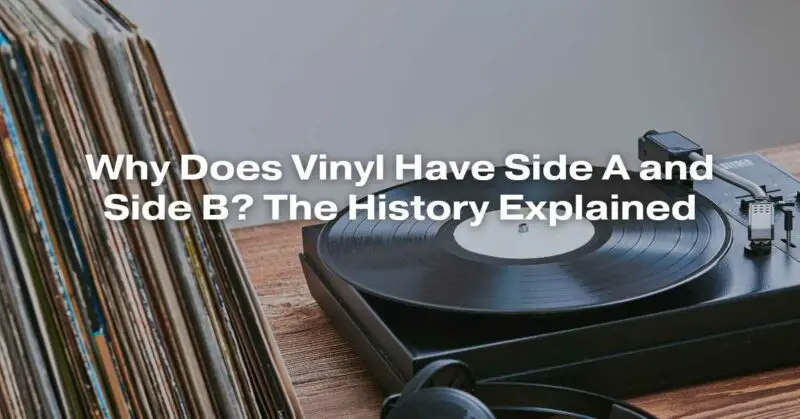Vinyl records, a classic and enduring medium for music playback, have long been associated with the terms “Side A” and “Side B.” These designations may seem like a quaint relic from the past in our digital age, but they hold a rich history and a unique significance in the world of music. In this article, we will delve into the fascinating history of why vinyl records have Side A and Side B and explore how this tradition has evolved over time.
The Birth of the Phonograph Record
To understand why vinyl records have Side A and Side B, we must first journey back to the late 19th century when the phonograph was invented. Thomas Edison’s invention of the phonograph in 1877 revolutionized the way we could record and reproduce sound. Initially, these early phonograph records were made of wax or other fragile materials, which posed significant challenges for both recording and playback.
The Introduction of Shellac Records
By the early 20th century, significant advancements were made in phonograph record technology, leading to the mass production of records made from shellac. These records featured grooves etched into the surface and were initially only playable on one side. To accommodate longer recordings, record companies eventually began releasing double-sided records, which led to the introduction of Side A and Side B.
Side A vs. Side B
The introduction of double-sided records brought about the need for clear labeling. Side A, also known as the “A-side,” typically contained the main hit or the artist’s most popular track. This was the side intended to grab the listener’s attention and entice them to purchase the record. Side B, also known as the “B-side,” featured a lesser-known or complementary track.
The B-side often served as a creative outlet for artists and record labels to experiment with different styles, showcase lesser-known songs, or include bonus content like instrumental versions or live recordings. In some cases, B-sides became unexpected hits and contributed to the artist’s success.
Evolution of Vinyl Records
As technology continued to advance, the materials used for making records also evolved. Vinyl records gradually replaced shellac due to their durability and improved sound quality. Despite this shift, the tradition of Side A and Side B remained intact.
During the vinyl record’s heyday in the mid-20th century, record labels and artists became increasingly strategic in their tracklistings. They carefully curated Side A to provide a captivating listening experience while reserving Side B for hidden gems or more experimental content.
The Vinyl Revival
In the digital age, vinyl records experienced a resurgence in popularity. Audiophiles and music enthusiasts sought out vinyl for its warm, analog sound quality and tangible, collectible nature. This resurgence reignited interest in Side A and Side B, with modern artists and record labels embracing the tradition while also using it as an opportunity for creative expression.
In the 21st century, vinyl records are often accompanied by digital downloads or streaming codes, bridging the gap between analog and digital formats. This allows listeners to enjoy the convenience of digital music while savoring the tactile experience of vinyl records.
Conclusion
The tradition of having Side A and Side B on vinyl records is deeply rooted in the history of recorded music. It emerged from the need to accommodate longer recordings on double-sided records, and over time, it became a significant part of the music industry’s culture. Today, vinyl records continue to captivate music enthusiasts, combining nostalgia with a timeless charm.
Whether you’re flipping the record from Side A to Side B or simply appreciating the unique qualities of each side, vinyl records and their designations continue to remind us of the rich history and enduring appeal of analog music playback. As the vinyl revival persists, Side A and Side B remain a beloved aspect of this enduring medium.

